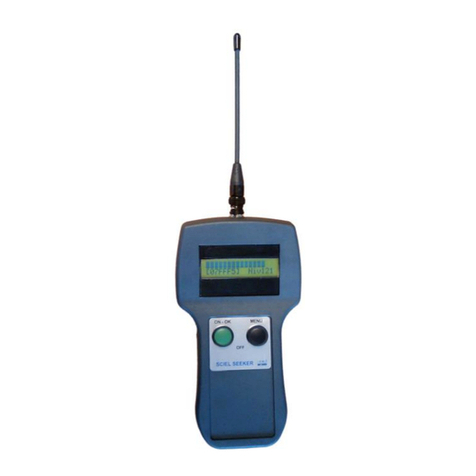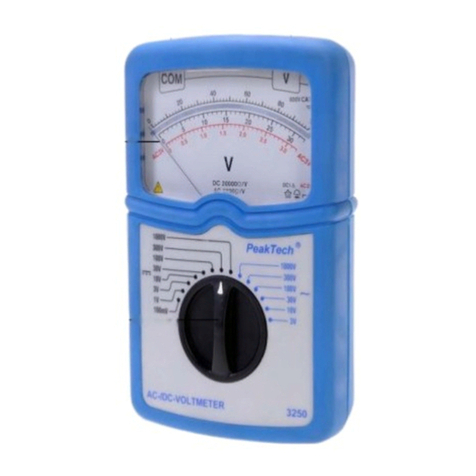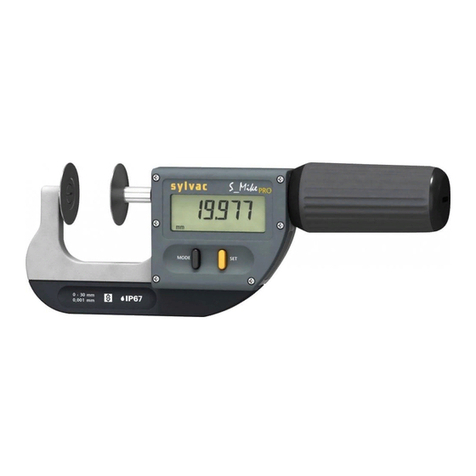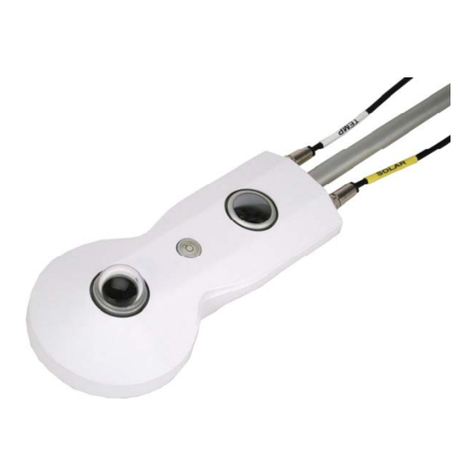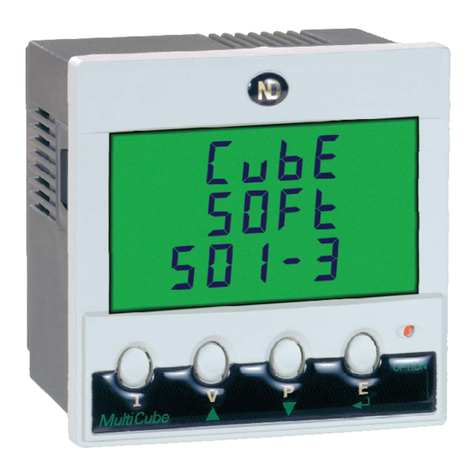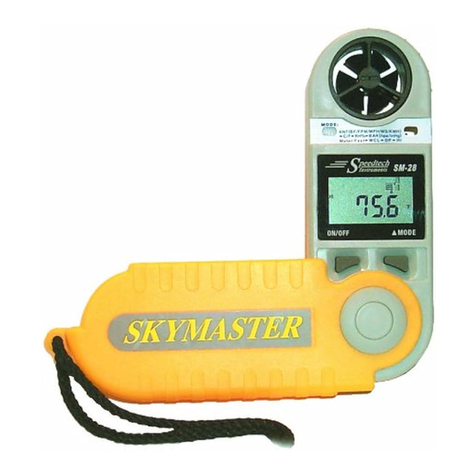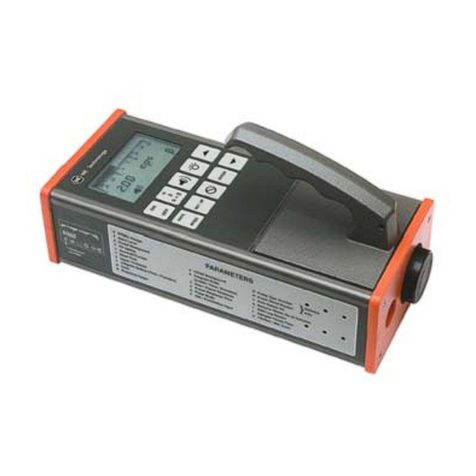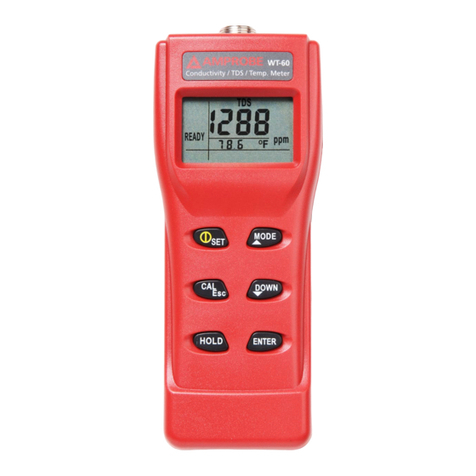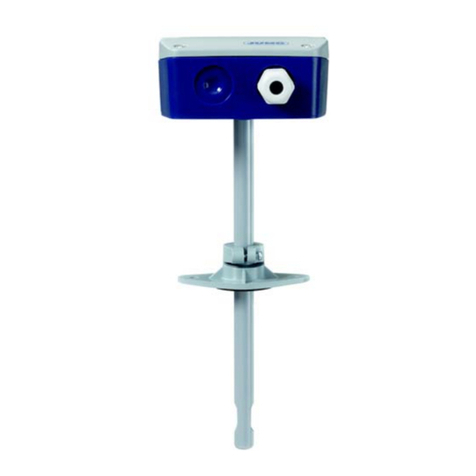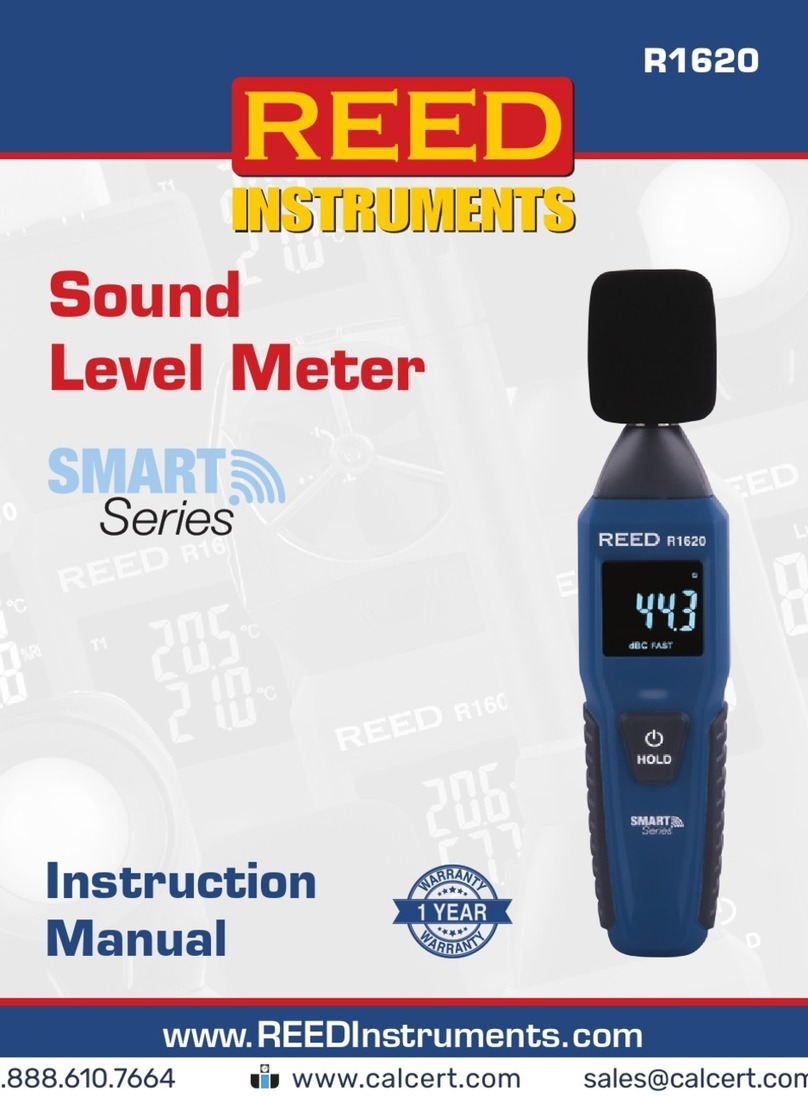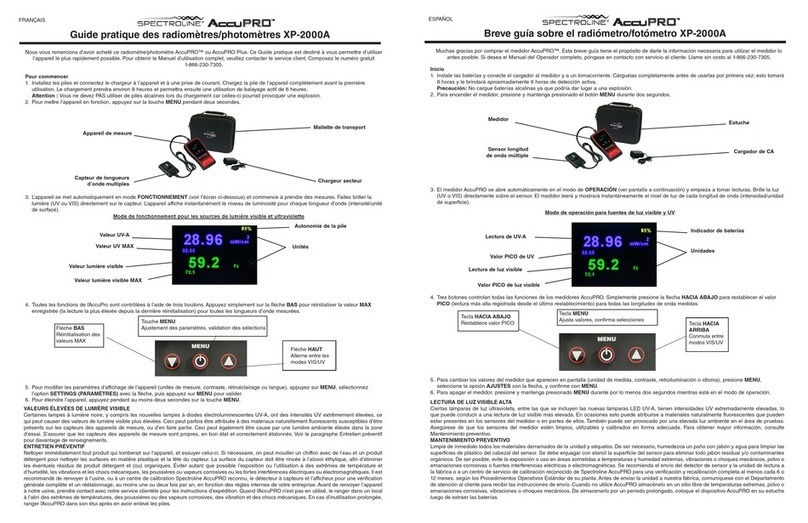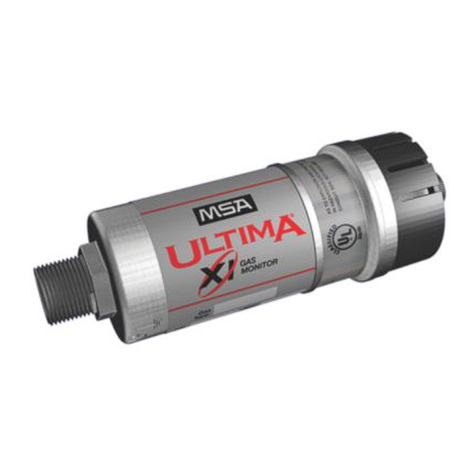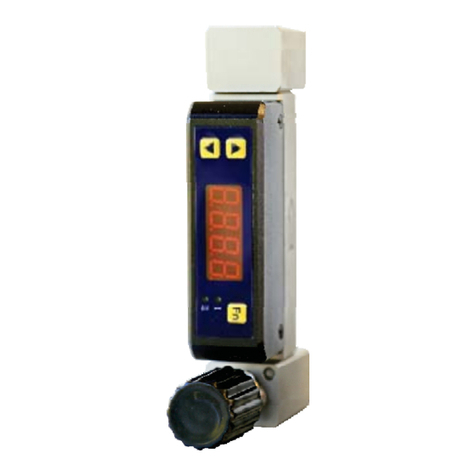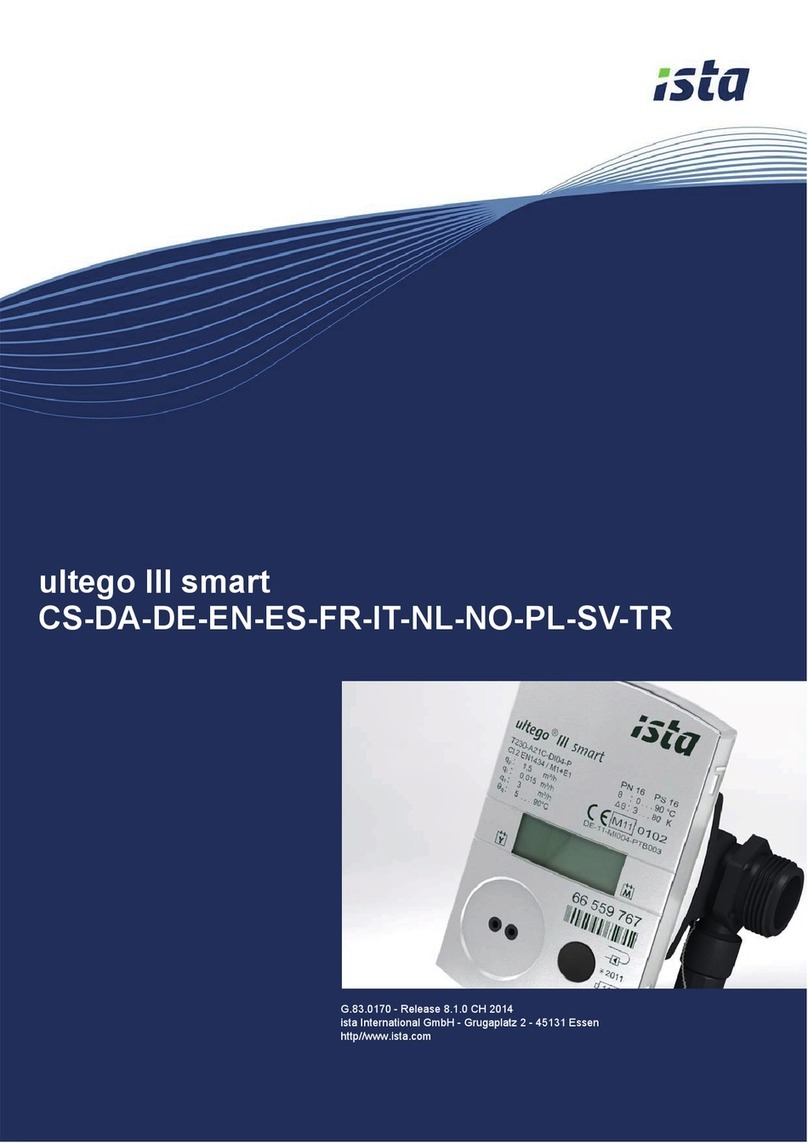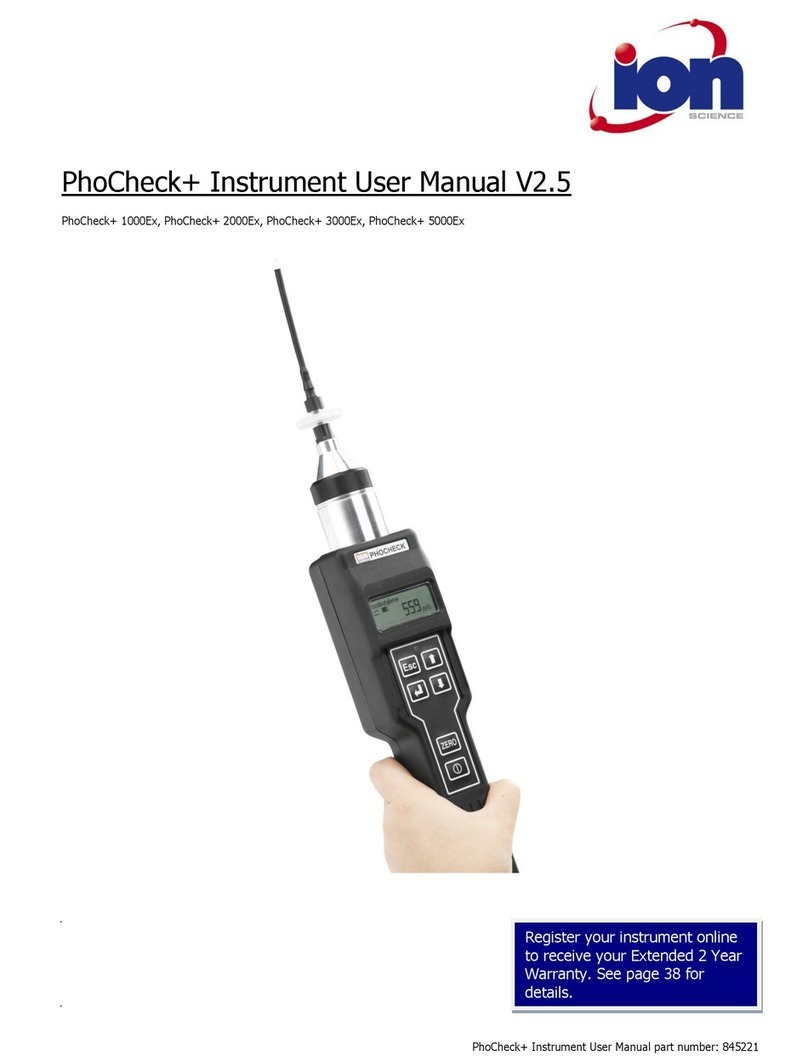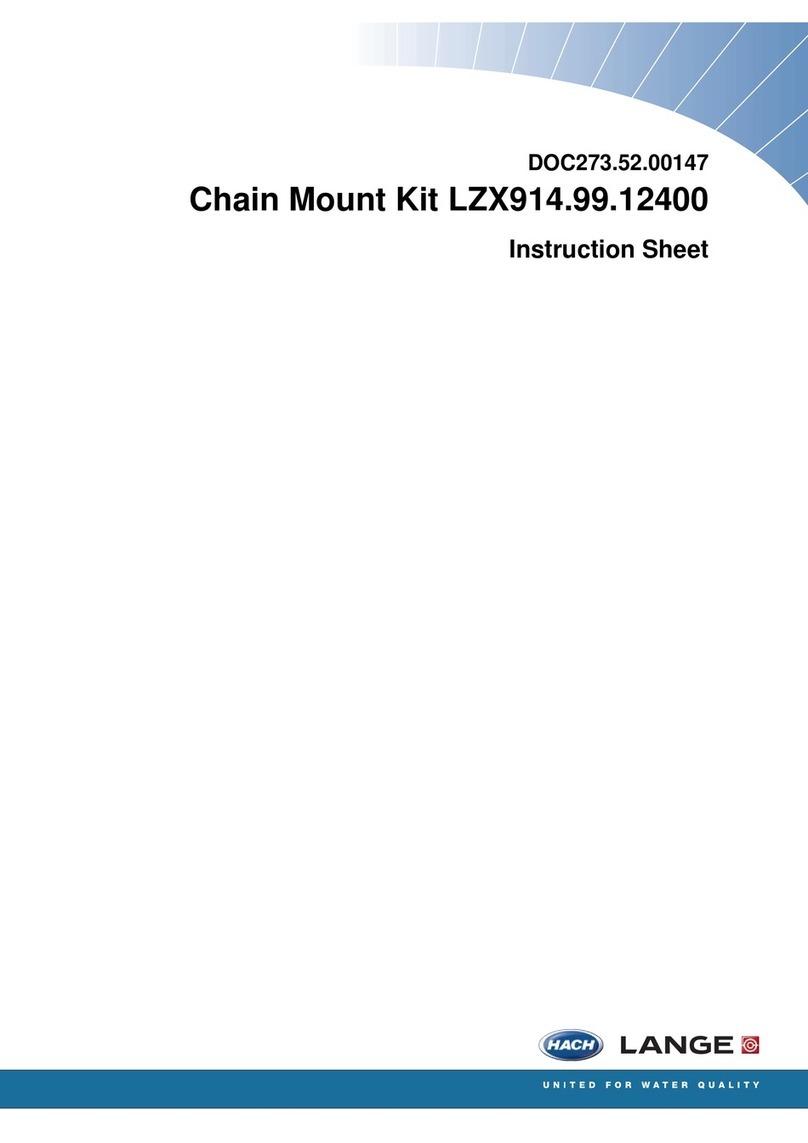ELA MIE User manual

MIE Rev. 1.4, © ELA, spol. s r.o. www.elabrno.cz
USER MANUAL
MAGNETIC - INDUCTIVE FLOWMETER
MIE
Please read this manual before first use. The manufacturer reserves the right to make changes without prior notice.

MIE Rev. 1.4, © ELA, spol. s r.o. www.elabrno.cz
Notes
……………………………………………………………………………………………………………………
……………………………………………………………………………………………………………………
……………………………………………………………………………………………………………………
……………………………………………………………………………………………………………………
……………………………………………………………………………………………………………………
……………………………………………………………………………………………………………………
……………………………………………………………………………………………………………………
……………………………………………………………………………………………………………………
……………………………………………………………………………………………………………………
……………………………………………………………………………………………………………………
……………………………………………………………………………………………………………………
……………………………………………………………………………………………………………………

MIE Rev. 1.4, © ELA, spol. s r.o. www.elabrno.cz
Contents
Introduction .........................................................................................................................................................4
Technical conditions ............................................................................................................................................5
Measurement conditions .....................................................................................................................................5
Sensor option .......................................................................................................................................................5
Main unit option...................................................................................................................................................6
Connection and assembly.....................................................................................................................................6
Magnetic –induction sensors..............................................................................................................................6
Tolerance of built-in lengths.................................................................................................................................7
Signal cable (connection between sensor and converter of the MIE-S) ..............................................................7
Sensor location and its position in piping.............................................................................................................8
Recommended positions for sensor installation .................................................................................................8
Recommendations for installation .......................................................................................................................9
Sensor grounding..................................................................................................................................................9
Electrodes.......................................................................................................................................................... 10
MIE commissioning........................................................................................................................................... 10
Checking installation and connections.............................................................................................................. 10
Service ............................................................................................................................................................... 10
Additional devices ............................................................................................................................................. 10
Packing and transport........................................................................................................................................ 11
Connection ........................................................................................................................................................ 11
Sensor connection............................................................................................................................................. 11
Control unit communication connection .......................................................................................................... 11
MODBUS protocol............................................................................................................................................. 12
MODBUS register............................................................................................................................................... 13
Declaration of conformity ................................................................................................................................ 14
Specification...................................................................................................................................................... 15
Adjustment protocol
Warranty

4
Introduction
MIE magnetic-inductive flowmeters (compact version: MIE-C, separated version: MIE-S) are precise measuring
devices intended for the measurement of liquid flow of electrically conductive media. The meters may be used
for measurements, registration, dosing, mixing, etc.
Applications
Water management, drinking and waste water measurement
Chemical, textile, paper, mining industry
Food industry
Power engineering and heating plants
Agriculture
Main advantages
Independent of power supply fluctuation and line voltage interference
Independent of pressure, temperature and density, etc of the media
No pressure losses
No disturbances of measured liquid consistency
Installation requirements
Minimum liquid conductivity 5 µS / cm (for demineralised water 20 µS / cm)
Fill the entire sensor profile
Steady flow through the sensor (keeping the calming distances at the inlet and outlet)
When selecting DN, it is necessary to consider the dependence of measurement accuracy on speed
Principle of magnetic –induction sensor
The measurement is based on the principle of Faraday’s law of electromagnetic induction. In compliance with
this law, electric voltage is induced in an electrically conductive body, which moves across a magnetic field.
The following equation is applied for voltage to be induced (generally):
U= B×D×vwhere: U- inductive voltage B- magnetic induction
D- piping diameter v- flow speed vector
If magnetic induction B and piping diameter D are constant, then induction voltage is proportional to the mean
flow speed. Liquid is flowing via a flowmeter
perpendicularly to the direction of the magnetic field.
Electric voltage which is monitored by two electrodes
placed perpendicularly to both magnetic field and flow
is induced by a stream of liquid with minimum electrical
conductivity. Excitation current with a rectangular
waveform is generated in a converter and fed to sensor
coil windings generating the flowmeter magnetic field.
The forced-current system provides constant excitation
under all conditions that can occur during the
operation.
B
v
U
!

5
Technical conditions
Measurement conditions
Measurement is independent up on:
Liquid temperature and pressure
Liquid density and viscosity
Solids contents
Usual level of magnetic field interference
For maintaining the MQI accuracy and reliability, it is necessary to meet the following conditions:
Electrical conductivity of medium ≥5 µS/cm, for demineralized water ≥20 µS/cm
Liquid velocity min. 0.3 m / sec, max. 12 m / sec.
Steady flow section performance no DN change bevel pipe part(s) of maximum 8˚.
Steady flow section length 5 DN upstream / 3 DN downstream (from sensor)
Fully filled sensor profile with liquid measured.
High quality operational contact between the sensor and liquid measured.
Measurement accuracy is interfered by:
Gassing of measured liquid and air bubbles
Strong stray earth currents
Liquid turbulence in the sensor
Solids of magnetic metals in the medium measured
Sensor option
A measuring pipe is made of non-magnetic material with welded flanges and assembly clamps. An
insulating liner with required properties is installed inside the pipe (according to the medium used). A
system of driving coils generating the required magnetic field is directly fixed on the measuring pipe
body.
A pair of electrodes located opposite and passing through the measuring pipe with liner is made of
high-grade steel and/or other material (according to the required chemical resistance against the
medium being measured).
The complete electrical section is assembled in steel housing (welded) with a neck for internal cabling.
Remote version: A signal cable with the standard length of 8 m/ Cu type 2 ×2 ×0.25 mm2is attached
to the neck and the cable passes through a cable seal (also other lengths are available).
Compact version: The instrument box body is attached to the neck.
The housing welding makes it possible to achieve a high-grade protection and surface finish provides
a steady climate resistance.
!

6
Main unit option
Control and evaluation electronics is assembled into robust aluminium housing with IP67 protection,
or in case of remote version, protection of sensor is IP68.
Additional option (customer request):
Multi-point calibration of the measuring range. The flowmeters are usually calibrated in 3 points. On
the customer‘s request, the number of calibration points can be increased.
Higher sensor protection IP 68: the requirement must be precisely defined (i.e. immersion depth and
time, and/or explosive zones).
Higher PN, and/or different sensor built-in lengths, different flange options (DIN, ANSI, etc.), after
consultation of your supply.
Connection and assembly
Converter connection to power supply must be performed in compliance with the standards and rules:
Connection of electrical instruments and appliances.
Protection against electric shock.
Heavy current distribution network in industrial plants.
Safety operational rules for electrical installations operated by low-level experienced personnel.
If requested our Service Division will carry out commissioning. If work is done by any different organisation,
the warranty can be cancelled in the case of such unauthorised work.
Electrical protection allows the use of the instrument in all kinds of active, passive and complex environments,
and after an agreement with us, it is possible to carry out some additional modifications even for severe
climaticconditions.
Signal and output cable routing should not be located near power output distribution network or in common
ducts.
Magnetic –induction sensors
Table for 1 m / s flowrates
Constructional dimensions and weights of inductive sensors
DN
m3/h
l/min.
l/s
DN
PN
Dimensions [mm]
Weight
[kg]
A
B
D1
D2
d
n
10
0,283
4,712
0,079
10
16
150
or
200
266
90
60
14
4
2,5
15
0,637
10,62
0,177
15
268
95
65
14
4
2,5
20
1,131
18,85
0,314
20
273
105
75
14
4
3
25
1,767
29,452
0,491
25
280
115
85
14
4
3,5
32
2,895
48,255
0,804
32
293
140
100
18
4
5
40
4,524
75,398
1,257
40
298
150
110
18
4
6
50
7,069
117,81
1,964
50
200
304
165
125
18
4
7
65
11,946
199,1
3,318
65
322
185
145
18
4
8
80
18,096
301,59
5,027
80
337
200
160
18
8
9,5
100
28,274
471,23
7,854
100
250
358
220
180
18
8
12
125
44,179
736,31
12,272
125
389
250
210
18
8
15

7
150
63,617
1060,3
17,671
150
300
418
285
240
22
8
20
200
113,1
1885
31,42
200
350
488
340
295
22
12
36
250
176,71
2945,2
49,087
250
400
543
405
355
26
12
58
300
254,47
4241,2
70,686
300
500
600
460
410
26
12
70
350
346,36
5772,7
96,211
350
655
520
470
26
16
85
400
452,39
7539,8
125,66
400
600
728
580
525
30
16
100
450
572,26
9537,5
158,96
450
770
640
585
30
20
120
500
706,86
11781
196,35
500
863
715
650
33
20
160
600
1017,9
16965
282,74
600
983
840
770
36
20
190
700
1384,7
23079
384,65
700
700
1040
910
840
36
24
260
800
1809,6
30159
502,65
800
800
1163
1025
950
39
24
350
900
2289,1
38151
635,85
900
900
1258
1125
1050
39
28
450
1000
2827,4
47124
785,4
1000
1000
1398
1255
1170
42
28
550
Tolerance of built-in lengths:
DN 10 ÷ DN 150 → A ± 5 mm, DN 200 ÷ DN 1000 → A ± 10 mm
Signal cable (connection between sensor and converter of the MIE-S):
Signals which are transmitted from a sensor electrode circuit to the converter will be in a range of
millivolts. They will be very sensitive to magnetic and electrostatic interference from neighboring
high-voltage cables, power supply cables and high power output motors, etc. The interference is
mainly compensated for by the converter connection, nevertheless if possible, it is necessary to
prevent all spurious signals.
The signal cable is of a special construction and length and is a part of the shipment, its length should
not be changed (for certificated meter must not be changed). The proper cable connection to the
converter is important; doing so may cause measurement failures. Special requirements are laid on
shielding, and the measurement precision depends on its quality.

8
The cable must not be extended.
The shielding must be well insulated on the whole route from ground and the other metal subjects. It
is recommended that the cable is located in a separate conduit or trays.
Sensor location and its position in piping
The inductive flowmeter sensor can be installed in any position according to requirements, however
for horizontal assembly, the electrode axis must always be horizontal.
Sensor must remain full of liquid.
It is recommended that the flow direction should follow the arrow on the sensor cover; the converter
is also preset for this direction. On the operating meter, it is possible to adjust the reverse flow
direction by changing the MIE converter parameter.
Bolts and nuts –verify if there is a sufficient space for their installation near flanges.
Vibration and deflection of piping –fix the piping on both sides from the flowmeter to avoid any
deflection and vibrations.
If you install any pipes with higher internal diameters, install a reducer; this will provide an axial shift
without increased mechanical stress of piping and sensor flanges.
To improve flow, use only the recommended straight lengths upstream (5DN) and downstream of the
sensor (3DN). Any change of a diameter with an angle up to 8˚is excluded from the above-mentioned
straight lengths. Suitably assembled flow deflectors and a combination of diffusers are used in more
sophisticated installations.
When you install the sensor in insulated piping (e.g. glass, artificial mass, etc.), use proper sealing
ground rings. A conductive connection between a sensor ground point and the liquid to be measured
is needed for a proper measurement.
Recommended positions for sensor installation
Air bubles inside the
sensoor.
Free discharge -
sensor at zero flow
without water.
Suitable location in the rising pipe
section.
In case of vertical piping downstream of the sensor
longer than 5m, install a venting valve (vacuum).
In a situation of free inlet or outlet, place the
sensor in the siphon.
!

9
Recommendations for installation
To avoid any measurement errors which are caused by air bubbles or failures on the lining, pay attention to
the following recommendations:
During assembling correctly seat the sensor, tighten screws uniformly and move on a diagonal one
after another.
It should be noted that the parallelism of flanges has a greater effect on packing than excessive
tightening forces on curved and seated flanges.
The sensor must be installed inside piping so that the axis of sensor electrode is always horizontal.
A PTFE (teflon) lining calls for extra care during handling and assembly. During installation/operation
avoid excessive under pressure in pipes. Please do not change and damage the outlet extension on
both ends of the sensor. The sensors are shipped from the factory with special covers to avoid any
shape deformations. (PTFE elastic memory should cause a partial compensation in future). Please
remove the covers just before installation, and when you insert it between counter flanges, replace
by a number of smooth metal sheet pieces which are removed just before tightening the bolts.
Packing –The extended part of lining does not operate properly as a seal, hence appropriate packing
must be inserted between sensor and pipeline. If the packing protrudes into a flow profile at any point,
this will cause turbulence and reduce the measurement quality.
During installation, make sure the sensor slides into piping if the pipeline is not flexible enough. It is
recommended that installation inserts (especially for greater internal diameters) should be used.
During installation of the sensor, counter flanges must not be welded (danger of the sensor lining
failure).
Sensor grounding
For reliable and proper operation of the inductive meter, it is necessary to use high-quality protective
grounding. Internal flowmeter cables and power supply PE (PEN) conductors provide protective
grounding. Working grounding is also provided via internal cables and a high-quality connection of the
sensor body with two metal pipe counter flanges. It is recommended that a connection made with M6
welded screws or bored threaded holes is used. The connection under flange fixing screws is not
recommended because of possible corrosion resulting in measurement failures.
When assembled into piping made from non-conductive material (or with non-conductive lining), it is
necessary to provide working grounding with liquid by a different method, e.g. by grounding rings –
valid for DN 10 ÷ DN 40. The rings can be ordered from factory, their material and chemical resistance
must comply with the liquid to be measured –usually produced from the same material as sensor
electrodes. The flowmeters from DN 50 ÷ DN 1000 are equipped of grounding electrode. Function of
grounding electrode is same as grounding ring.
When assembled, it is necessary to insert the packing on both sides of the grounding ring. Make sure
that no parts will protrude into an internal sensor profile (turbulence).
Drawing of sensor working grounding inside pipeline
Use of grounding rings –valid for DN 10 ÷ DN 40

10
Electrodes
The electrode material must be selected according to its chemical resistance of the liquid to be
measured.
The electrode purity can affect the measurement precision, and high impurity concentration can affect
the measurement process (liquid insulation).
Immediately after shipping, it is not necessary to clean the electrodes before installing the sensor
inside piping. Clean with a fine cloth, or use a chemical detergent. Avoid any damage of the lining! If
the electrodes must be cleaned during operation, either mechanical or electrolytic methods may be
used. Mechanical cleaning can only be used for a suitable sensor assembly, otherwise dismantle the
sensor from the pipeline. After cleaning reinstall the sensor.
Any electrolytic method is advantageous for its simplicity, however it can only be applied for the
contamination that can be removed by electrolysis (low contamination and deposit).
All detailed instructions are available from the flowmeter manufacturer on request.
If a flowmeter operates under normal conditions, for most liquids it is not necessary to clean
flowmeters during their life, only self-cleaning by flowing liquid is satisfactory (a recommended
velocity is over 3 m/s).
MIE commissioning
Checking installation and connections
Proper sensor and grounding.
Tightening all cable connection clamps and plug in all connectors.
For MIE-S verify the completeness of the shipped set according to the serial numbers of sensor and
converter.
Verify proper supply voltage; see the label on the converter.
Verify proper electrical protection.
If the installation is fault-free, fill the pipeline with liquid and verify the sensor tightness inside the
pipeline. After short washout, switch the system on-off-on.
Service
The commercial, service and technical assistance for MIE is provided by Ela Brno, Ltd.
The Service Division secures all activities that are related to the commissioning and all parameter
changes at site (with the exception of certificated meters).
Ela Brno, Ltd can authorise another organisation to provide service. The organisation must be able to
submit the appropriate approval/certificate on request. The producer carries out recalibration of all
meters and their repairs.
Additional devices
The additional devices are intended for remote control of the converter output signals (displaying
and processing).
The additional devices are not usually included in MIE shipment, but their type should be approved
by the manufacturer. In such a case, the manufacturer is only responsible for the suitability of input
parameters, and all other parameters are set according to the manufacturer’s specifications of the
additional devices.
If a set is ordered without installation, the sensor is packed in corrugated paper and the converter is
enclosed in a cardboard box or wooden palette.

11
Packing and transport
If the kit is ordered without assembly, the sensor is packed in bubble wrap (per pallet) and the control
unit is paper boxes.
The delivery can be carried out by a public carrier, the transport of the customer or the import by the
production organization. The costs are paid by the customer.
Connection
Sensor connection
(compact version MIE –C)
1
Elecctrodes
White
Red
2
Screen
3
Black
Red
4
Screen
5
Coils
excitation
Green-yellow
6
Yellow
7
Blue
Sensor connection
(separated version MIE –S)
1
White
2
Screen
3
Brown
4
Green yellow - grounding
5
Screen
6
Yellow
7
Green
Control unit communication
connection
Connect the main unit to the Ethernet network
with an RJ45 connector. Power is via passive
PoE. The meaning of the RJ45 connector pins
corresponds to the table:
Pin RJ45
Description
1
TX+
2
TX-
3
RX+
4
+24V1)
5
+24V1)
6
RX-
7
0V1)
8
0V1)
1) The device is equipped with overvoltage
protection and protection against polarity
reversal.
!

12
MODBUS protocol
MODBUS protocol implementation conforms MODBUS Application Protocol Specification, version 1.1,
modbus.org 12/06/02.
Device comes with default settings that are:
slave address set to 1,
baud rate 9600 Bps,
8 data bits, even parity, one stop bit.
Each MIE register takes two MODBUS registers, i.e. each MIE register is 32 bits long. These 32 bits are
interpreted as an integer with or without a sign or as a floating point number with single precision. Double
precision floating point numbers are stored in eight bytes, so they are transmitted in four MODBUS registers.
The MODBUS register with lower address is transferred first.
Device implements MODBUS functions 0x03 and 0x10.
Coding of integers:
Coding of floating point numbers:
Floating point numbers compatible with single type defined by IEEE 754.
Floating point numbers compatible with Double type defined by IEEE 754.
31
30
29
28
27
26
25
24
23
22
21
20
19
18
17
16
15
14
13
12
11
10
9
8
7
6
5
4
3
2
1
0
sign for signed integer
MODBUS register with lower address
MODBUS register with higher address
31
30
29
28
27
26
25
24
23
22
21
20
19
18
17
16
15
14
13
12
11
10
9
8
7
6
5
4
3
2
1
0
significant field
exponent
sign
MODBUS register with lower address
MODBUS register with higher address
MODBUS register MODBUS register
with the highest address of four with the lowest address of four
63
62
52
51
0
significant field
exponent
sign

13
Modbus registers
All registers are read only. For security reasons writing to registers is a bit more complex than reading, so the
manufacturer provides configuration software which is free to charge.
Address
Type
Name
Unit
Description
[dec]
[hex]
100
0064
unsigned int
Slave address
Slave device address in range from 1 to 247.
102
0066
unsigned int
Baud rate
Bps
Transmission rate, one value from 1200, 2400,
4800, 9600, 14400, 19200, 28800, 38400, 57600.
104
0068
unsigned int
Parity
Transmission parity check, one value from 0 = no
parity, 1 = even, 2 = odd, 3 = no parity, two stop
bits.
106
006A
unsigned int
Pause
µs
Additional time in microseconds to extend silent
interval between server request and slave
response.
108
006C
unsigned int
Response
time limit
µs
If slave device is not able to prepare response
until this time expires, response isn't be send.
110
006E
unsigned int
Secondary
flow unit
Unit of register 1024(10). Can be one from: 0 = l/s,
1 = m3/h, 2 = m3/s, 3 = l/min, 4 = UKgal/s, 5 =
USgal/s.
1000
03E8
float
Q
l/s
Current flow, in litres per second.
1002
03EA
unsigned int
Main status
Bit 15: Parameter memory reading error.
Neither measurement nor service
function can be started.
Bits <7, 0>: State of device:
0x00 … idle time,
0x80 … measurement is in progress,
0x80 to 0xFF … service function is in
progress.
1004
03EC
unsigned int
Alarms
Bit 31: excitation circuit failure,
Bit 29: unfilled pipe error.
1008
03F0
float
CM
Main calibration constant (significant field)
1010
03F2
signed int
CE
Main calibration constant (exponent)
1020
03FC
float
Velocity
m/s
Flow velocity in meters per second.
1022
03FE
signed int
Temperature
˚C
Converter temperature.
1024
0400
float
Q in
secondary
unit
Current flow in unit by register 110.
2000
07D0
double
S+
m3
Forward volume counter.
2004
07D4
double
S-
m3
Backward volume counter.
4002
0FA2
unsigned int
Back
Flow direction reversal. QM is measured flow
obtained by reading a register 1000 (or 1024) and
Q is a real flow. If Back = 0 than Q = Qmotherwise
Q = -Qm.
4004
0FA4
float
Cutoff low
%
Lower and upper limits for small flow suppression
(hysteresis algorithm), in percentage of calibration
range (register 8100(10). Usual values are 0.4 and
0.6%.
4006
0FA6
float
Cutoff high
%
8002
1F42
float
DN
mm
Nominal sensor size.
8100
1FA4
float
Calibrated
range
l/s
9002
232A
unsigned int
Device type
Device type:
9004
232C
unsigned int
Firmware
version
for example 0x01090C00 = 1.9.12.0
9006
232E
unsigned int
Serial number

14
Declaration of conformity
Product: MQI 99 - C/S - SMART, MQU 99 - C/S - SMART, MHU 99 - C/S -SMART, MI,
MIA, MIE, ESONIC, PU, CU
Manufacturer: ELA, spol. s r.o.
Headquarter: Mikulovská 1, 628 00 Brno
Office, workshop: Sokolova 32, 619 00 Brno
Product description and
designation: flow and level measuring instruments
This Declaration of Conformity is issued under the sole responsibility of the manufacturer.
The product above is in compliance with the following laws:
Act No. 90/2016 Coll., On technical requirements for products
Council Directive 2014/35 / EU (Government Regulation No. 118/2016 Coll. On conformity assessment
of electrical equipment intended for use within certain voltage limits during their delivery to the
market)
Council Directive 2014/30 / EU (Government Regulation No. 117/2016 Coll., On Conformity
Assessment of Products in terms of Electromagnetic Compatibility when Delivering to the Market
The following technical standards and specifications were used in the assessment:
ČSN EN 61010-1 ed. 2
ČSN EN 61326-1 ed. 2
ČSN EN 61000-4-2 ed. 2
ČSN EN 61000-4-3 ed. 3
ČSN EN 61000-4-4 ed. 3
ČSN EN 61000-4-5 ed. 3
ČSN EN 61000-4-6 ed. 4
ČSN EN 61000-4-8 ed. 2
ČSN EN 61000-4-11 ed. 2
The device may only be installed, commissioned and repaired by a person instructed and authorized in
accordance with applicable regulations.
Issued in Brno: 1.9.2020 Ing. Milan Vlček, Director of company

15
Specifications
Option compact version
separated version (sensor instalated under ground or under
liquid level), fixed cable, cable length according to the order
(max. 50 m)
Nominal sizes flange DN 10 ÷ 1000 mm, without flanges DN 10 ÷ 100 mm
Insulation class of excitation coils class E
Connection flanged DIN (ANSI, BS, JIS) / hygienic - food DIN 11 851
Maximum pressure standard 1,6 MPa (0,6 / 1,0 / 2,5 / 4,0 MPa)
Liner material hard + soft rubber DN 10 ÷ DN 1000 / teflon PTFE DN 10 ÷ DN
500
Electrodes stainless steel 316Ti (Hastelloy / Tantal / Titan / Platinum)
Outer casing and flanges carbon steel standard (stainless steel 304, 321)
Flow tube stainless steel 321
External coating acrymetal multi component lacquer / polished stainless steel
Protection IP67-NEMA5 (compact version) / IP68-NEMA6 (separated
version)
Media temperature compact version: 0 ÷ 90 °C
separated version: hard rubber (0 ÷ 90 °C), PTFE (-20 ÷ 130 °C)
Accessories options sensor grounding ring for plastic pipe for DN 10 ÷ DN 40
sensor grounding electrode for DN 50 ÷ DN 1000
Special option food industry stainless steel version –teflon lining, fitting DIN 11
851
flange version with stainless steel cover –teflon / rubber lining
flange all-stainless steel version –teflon / rubber lining
without flange version –teflon / rubber lining
Flow direction both direction
Suppresion of small flows yes
Empty pipe detection yes
Electrical conductivity of medium ≥5 µS/cm, for demineralized water ≥20 µS/cm
Accuracy of measurement 0,5 % of measured value + 2 mm/s (reference conditions)
Communication port ETHERNET, 10Base-T resp. 100Base-TX, protocol MODBUS TCP
(instantneous reading, parameters setting and calibration)
Power supply 9 ÷ 36 V DC / 10 W
Main unit protection IP67 - NEMA5
Ambient temperature -20 ÷ 60 °C

16
Headquarters / Service
ELA, spol. s r. o.
Sokolova 32
619 00 Brno
Czech Republic
Billing address
ELA, spol. s r.o.
Mikulovská 1
628 00 Brno
Czech Republic
IČO:46969063
DIČ:CZ46969063
More on: www.elabrno.cz/contacts
Table of contents
Other ELA Measuring Instrument manuals
